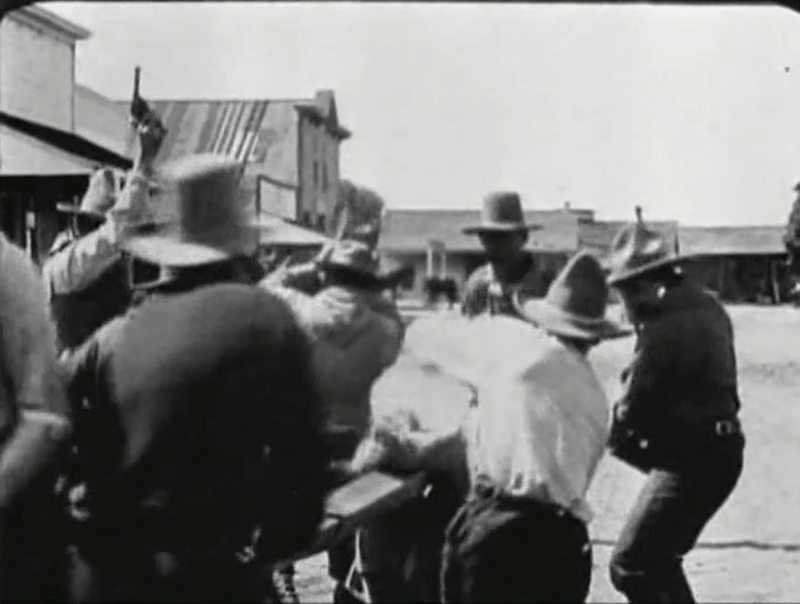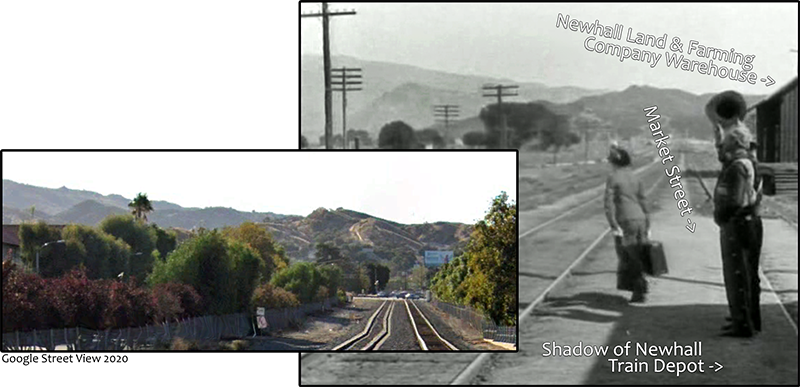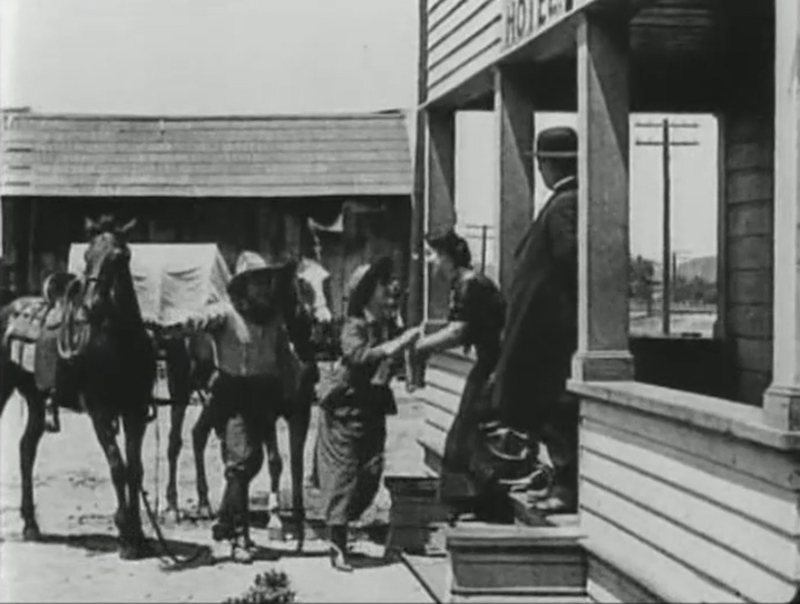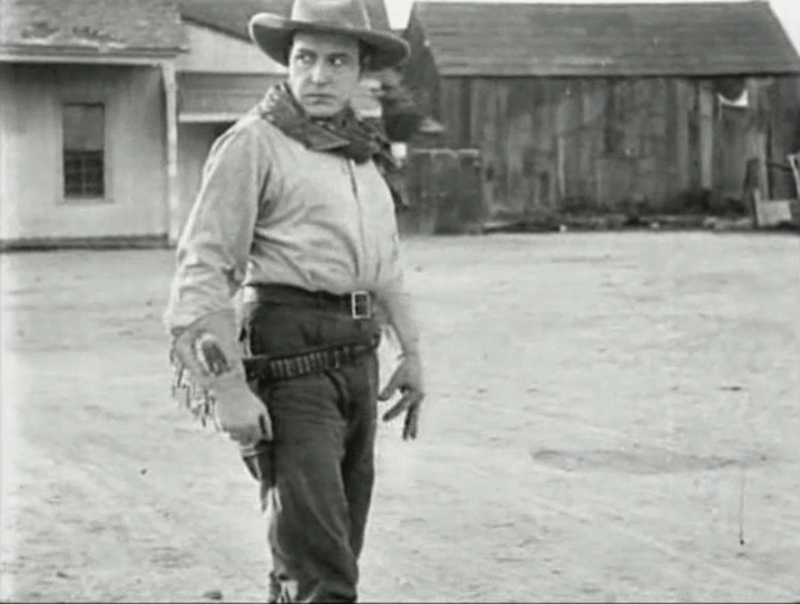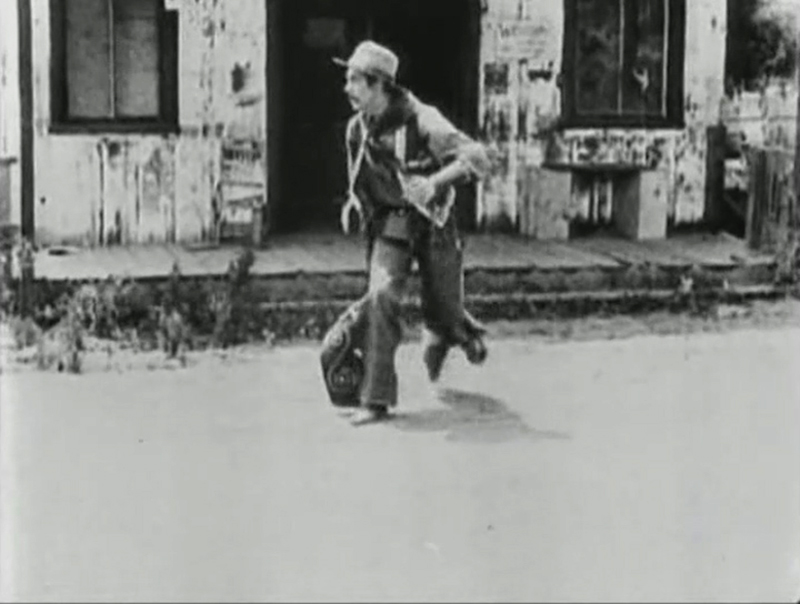|
|

|
Jesse Lasky was a big name in Hollywood — and Cecil B. DeMille wasn't — when Lasky's Famous Players crew arrived in Newhall in 1914 to finish out production of DeMille's screen adaptation of "The Virginian." Production began on Palomar Mountain southeast of Temecula in San Diego County, but the altitude bothered the actors, so the company moved to the lower and dustier streets of Newhall — or at least one street, namely Railroad Avenue. This was reportedly the first film where DeMille received solo credit as director. Everybody in Newhall would come to know him a year later when he took over the entire town for production of a comedy called "Chimmie Fadden Out West." Likewise, Dustin Farnum, the star of our movie, was a big name in filmdom in 1914, and Bill Hart wasn't. (Hart is not in our movie.) Both were successful Broadway stars, but Farnum got the jump on Hart, arriving in Hollywood in 1910. Hart was a relative latecomer, waiting until 1914 to make the switch from stage to screen. But he would quickly eclipse Farnum in popularity. As it happens, most of the popular screen adaptations of Owen Wister's "The Virginian" would film at least partially in Newhall, among them this 1914 version, the 1946 version with Joel McCrea, and the 1962 television series with Doug McClure and James Drury. The 1929 version with Gary Cooper filmed elsewhere. The following clips are shown here: 00:00 — The building with the "Saloon" sign might be the Derrick Saloon at 8th and Railroad Avenue; we aren't certain. The view is to the east. Compare it to the view of the Derrick Saloon in 1929's "Code of the West". 00:33 — This is Railroad Avenue, looking north from Market Street. At far left is the Swall/Mayhue store, then we see the Oil Exchange bar with the peaked roof, and the Derrick Saloon at the end of the street, perpendicular to the other buildings. The Derrick Saloon would become the Rendezvous bar in the late 20th Century. 00:56 — In the scene with the train and the Overland Mail stagecoach, the train is pulling into the SPRR Newhall Depot from the south. The depot, located at the northeast corner of Railroad Avenue and Market Street, is out of frame; we only see its shadow. The building we see at right is The Newhall Land and Farming Company's warehouse, later known as the "potato warehouse," on the opposite side of Market Street. 02:15 — We see the mystery building again (from the first clip), then a few more buildings we'll need to figure out. The gunman who comes after our hero does so in front of what appears to be Nick Rivera's saloon, next door to the Oil Exchange bar.
|
The site owner makes no assertions as to ownership of any original copyrights to digitized images. However, these images are intended for Personal or Research use only. Any other kind of use, including but not limited to commercial or scholarly publication in any medium or format, public exhibition, or use online or in a web site, may be subject to additional restrictions including but not limited to the copyrights held by parties other than the site owner. USERS ARE SOLELY RESPONSIBLE for determining the existence of such rights and for obtaining any permissions and/or paying associated fees necessary for the proposed use.
